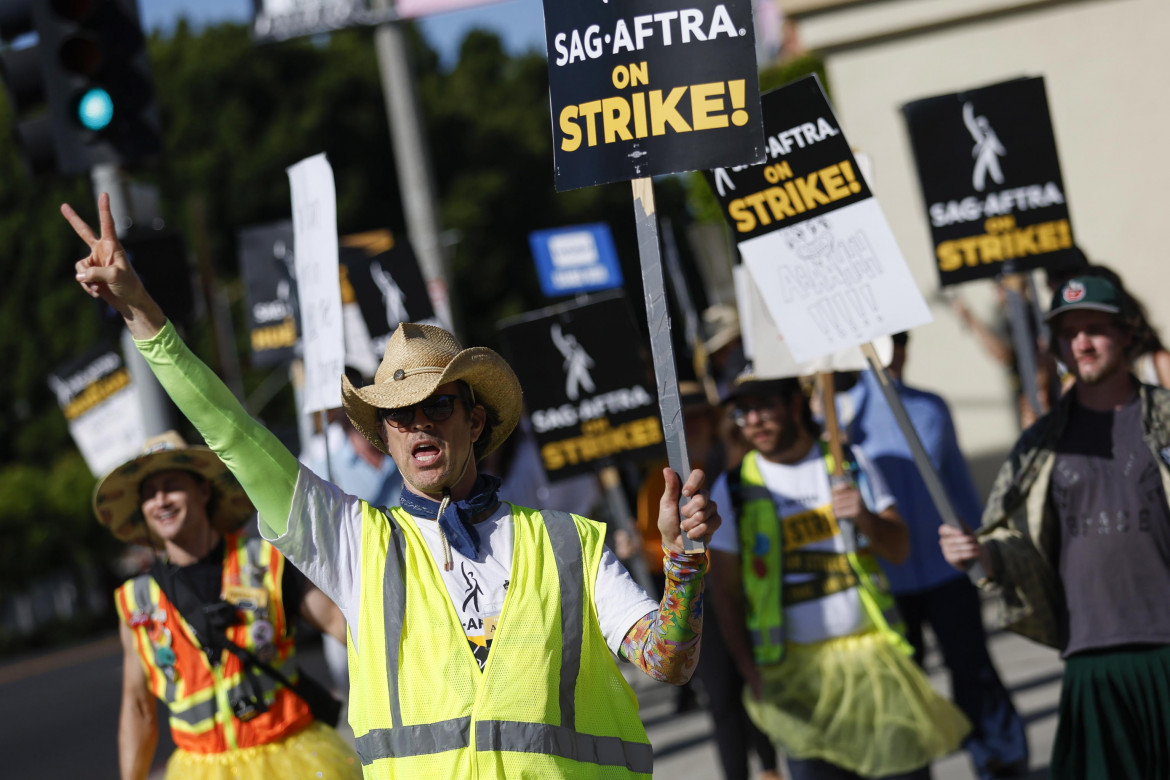Analysis
Workers won, but the strike exposed the Hollywood factory for what it is
The resolution of the strike will allow productions to resume soon and rescue next summer's film release schedule. However, the strike might leave workers with a bitter taste.

The news came on Wednesday evening and immediately made the rounds in Los Angeles, where the motion picture industry has been paralyzed for more than six months, first by the writers’ strike and then by the actors’ strike. The 11,000 members of the WGA writers’ union ratified a new contract in late September, at the end of a 148-day strike. On Thursday, after 118 days of picket lines, SAG-AFTRA, the union representing 14,000 film and TV actors, also announced an “agreement in principle” that will allow the Hollywood production machine to get back on track after one of the longest and most contentious labor disputes in its history.
The agreement came at the end of drama-filled negotiations, after the association representing film studios and streaming platforms (AMPTP) presented what it called its last and final offer, a proposal accepted by the union just minutes before the set deadline. The contract is set to be submitted to union members for ratification this week. The AMPTP has called it “a new paradigm” that contains “the biggest contract-on-contract gains in the history of the union, including the largest increase in minimum wages in the last 40 years” as well as “a brand-new residual for streaming programs.“
According to SAG, the agreement contains benefits worth more than $1 billion and includes increased compensation, better pension and retirement benefits, as well as limits on the use of artificial intelligence – a particularly thorny issue. In the case of actors, this refers mainly to “synthetic characters” and the use of computers to assist or modify human performances, both in terms of appearance and voice. The practice is already rampant, as evidenced by the cases of actors who have found themselves starring in video games without their knowledge or have seen themselves “altered” in post-production without consent (a famous case in Hollywood is that of the “synthetic” tear added to Keanu Reeves’ face).
The ways in which artificial intelligence and “generative systems” are used should now be regulated and subject to the consent of those involved. As Variety noted, the Hollywood disputes will have been the first to set the framework for the creative and copyright issues increasingly affecting the world of creative work.
In the last months, Fran Drescher, president of the union and an actress best known for her role in the sitcom The Nanny, has framed the labor dispute as an existential battle for quality of life for entertainment workers and for a “co-partnership” in creative production, instead of the industrial model that has produced enormous inequality in the entertainment sector (like everywhere else). According to a Los Angeles Times analysis, in the past five years Rupert Murdoch, head of FOX, has earned $174 million, Ted Sarandos (Netflix) $192 million, Bob Iger (Disney) $195 million and David Zaslav (Warner Bros/Discovery) $498 million. At the same time, the vast majority of creatives (with the exception of the few stars) are working in precarious and uncertain conditions, increasingly similar to the Silicon Valley gig economy.
The resolution of the strike will allow productions to resume soon and rescue next summer’s film release schedule. However, the strike might leave workers with a bitter taste. For instance, Mary McNamara’s commentary in the Los Angeles Times was particularly scathing, blaming studio executives for an avoidable six-month paralysis that cost California’s economy alone $6 billion and ended the careers of many workers in the field who had to find other ways to support themselves. According to McNamara, the strike has shown the real machinery behind the “magic” of filmmaking, revealing “that the ‘dream factory’ is, in fact, just a factory.”
In the background, a structural uncertainty remains. The streaming evolution that led to the “golden age of television” (599 series produced just in 2022) hardly seems sustainable. Over-competition among platforms for a finite number of subscribers will now likely lead to a contraction in production (also in order to offset the concessions to unions). Moreover, to cope with the increased costs, digital studios are already reintroducing advertising-based financing models (or premium subscriptions to avoid ads). In short, the offering will tend to look more like the old television and cable model than the endless on-demand options to which we have been accustomed. The inevitable consequence is that costs will increase for viewers.
Originally published at https://ilmanifesto.it/hollywood-quando-la-fabbrica-dei-sogni-e-solo-una-fabbrica on 2023-11-10
